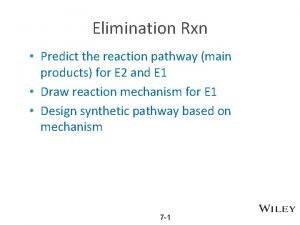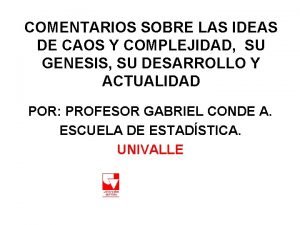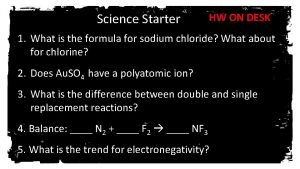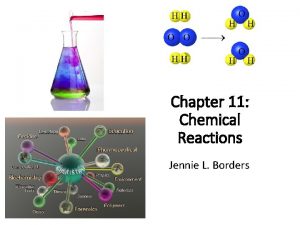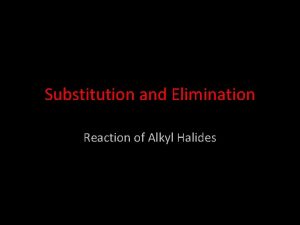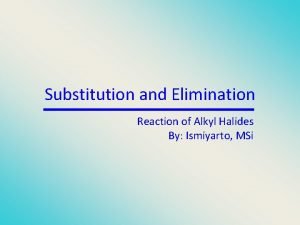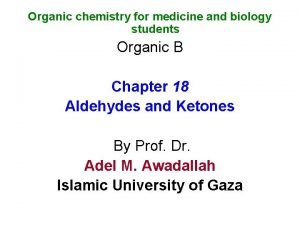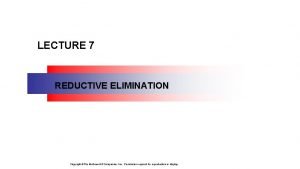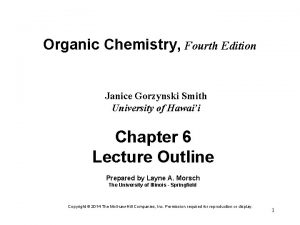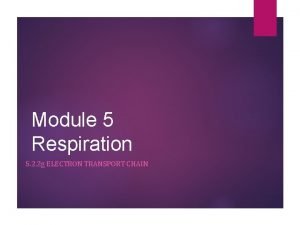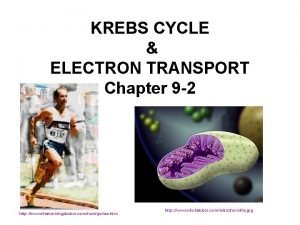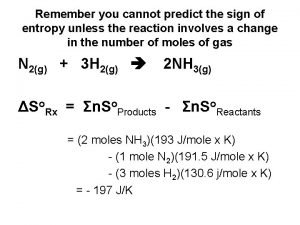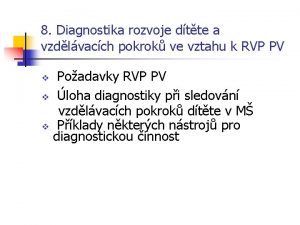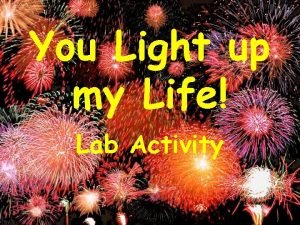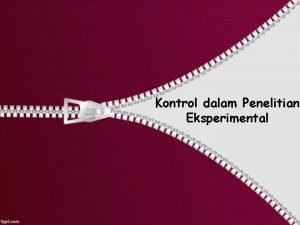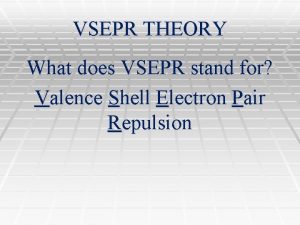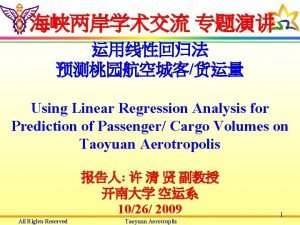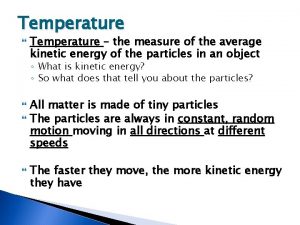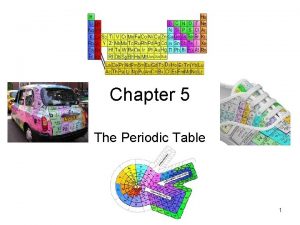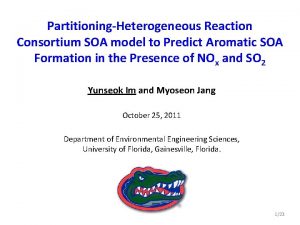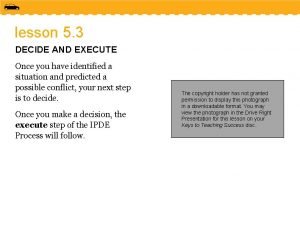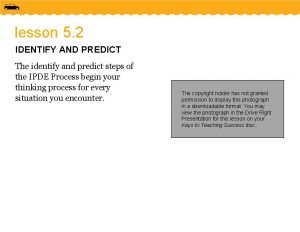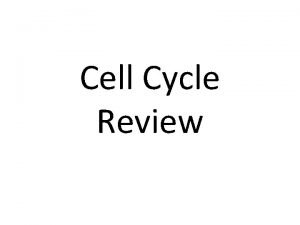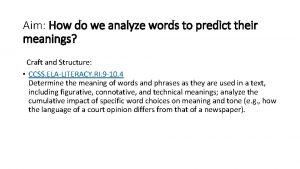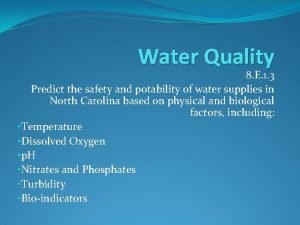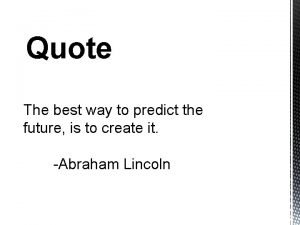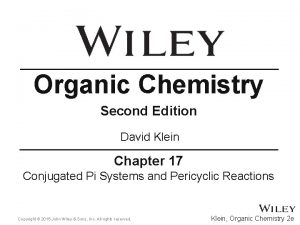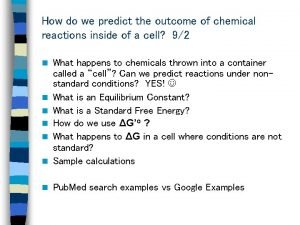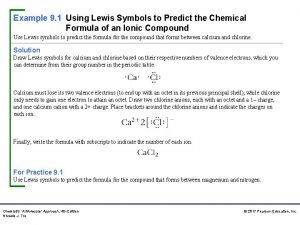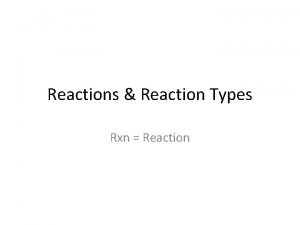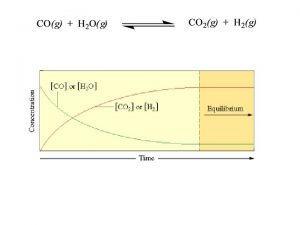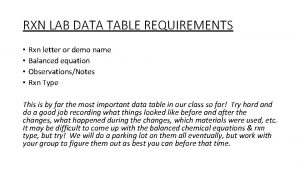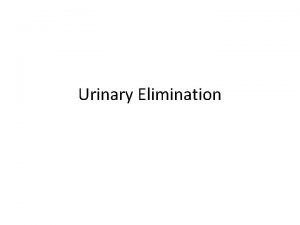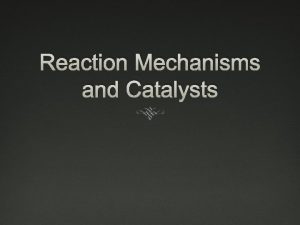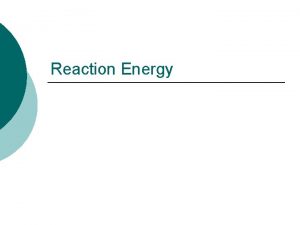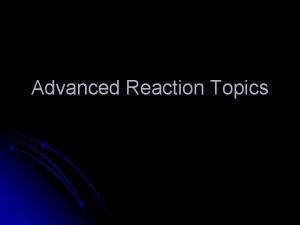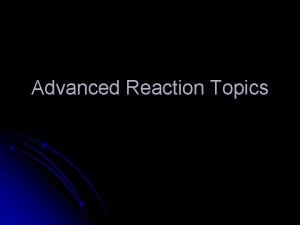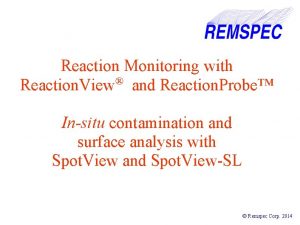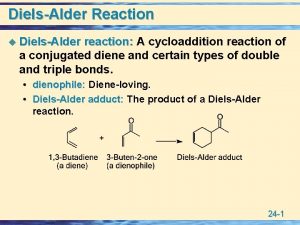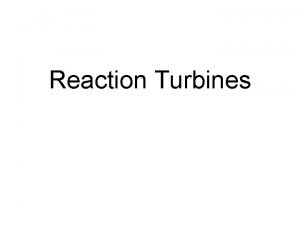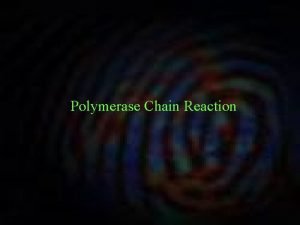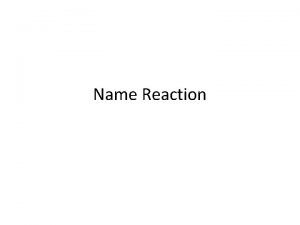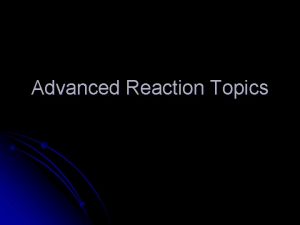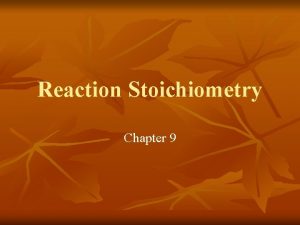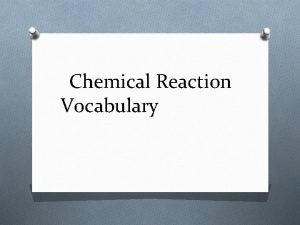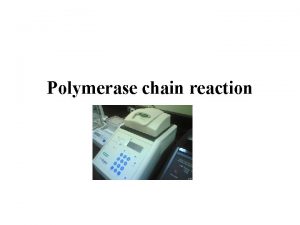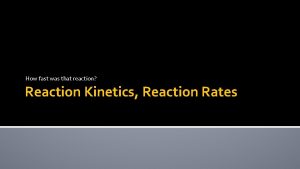Elimination Rxn Predict the reaction pathway main products






































































- Slides: 70

Elimination Rxn • Predict the reaction pathway (main products) for E 2 and E 1 • Draw reaction mechanism for E 1 • Design synthetic pathway based on mechanism 7 -1

Introduction to Elimination • Definition: A molecule loses H-X (H and X atom/group from vinyl carbon) to form alkene • Elimination is the opposite of Addition, typically requiring high temperature, driven by alkaline (basic) environment. • Two main ingredients for an elimination: – A BASE (to remove H as H+) – an electrophile with a Leaving Group 8 -2

Nucleophile vs. Base • Consider –OH, which can act as a base or a nucleophile Attack at the α Carbon ALKENE β or 1, 2 Reaction at the β Hydrogen 8 -3

Two mechanisms for Elimination • All elimination reactions involve both loss of a leaving group and proton transfer The mechanism may be a concerted (one step) process • or a step-wise process. • 8 -4

E 1: Elimination with 1 st order kinetics • • E 1 elimination represents the 1 st order rate law The rate law for E 1 rxn appears: r = k[substrate] • • • Reaction rate for E 1 rxn depends only on [substrate] A change in [Base] will NOT affect the rate of E 1 rxn. Mechanism involves a slow first step followed by fast second step. 8 -5

E 2: Elimination with 2 nd order kinetics • The rate law for E 2 rxn appears as 2 nd order rxn: r = k[substrate][Base] • Both change in [base] or [substrate] will affect the E 2 reaction rate. Mechanism: single step reaction • 8 -6

Structure of Substrate • a-/b-position in reaction center 8 -7

3° Substrate is preferred in E 2 • 3° substrates are more reactive toward E 2 than are 1° substrates even though 1° substrates are less hindered • The 3° substrate should proceed through a more stable transition state (kinetically favored) and a more stable product (thermodynamically favored). 8 -8

E 2 for Substrate 8 -9

Regioselectivity of E 2 • • • Regioselectivity: Preference of locations in Reactions (producing isomers) In elimination reactions, Different β sites available for deprotonation to yield different alkenes Zaitsev product: more substituted alkene Hofmann product: less substituted alkene Zaitsev product Hofmann product 8 -10

E 2 regioselectivity depends on Base Steric Effect from base is causing the difference 8 -11

Less sterically hindered base Zaitsev • • Zaitsev product predominate when a base that is NOT sterically hindered is used. Less sterically hindered base has lower energy barrier (Ea) 8 -12

Sterically hindered base Hoffmann • • Sterically hindered base favor the Hofmann product. Common “bulky” bases for Hoffman elimination: • Sterically hindered bases are useful in many reactions 8 -13

Stereoselectivity of E 2 for Trans When two b-H atoms are available, dehydrohalogenation of 3 -bromopentane gives the following products Recall Trans isomer is more stable than cis isomer (thermodynamics) Trans has lower activation energy. 8 -14

Practice: Predict E 2 products • Assuming both reaction proceeds E 2 pathway methylene cyclohexane, 3 -methylcyclohexene; 1 -butene, trans-2 -butene 8 -15

E 2 for substrate w/ single β-H When there is only one β-H to be eliminated, both E and Z alkene products may result from this reaction. • Draw both E and Z products 8 -16

*E 2 for single β-H yields ONE isomer • When the reaction is actually performed, only the E product is observed 8 -17

Anti-Coplanarity in E 2 transition state • • • E 2 mechanism: base and substrate are both in the rate determining step In the transition state, the C-H and C-Br bonds that are breaking must be rotated into the same plane as the pi bond that is forming Transition state structure illustrating the coplanar geometry 8 -18

*Anti coplanar b-H and LG 8 -19

Practice: Predict E 2 products • Assuming both reaction proceeds E 2 pathway 8 -20

Elimination on Cyclohexyl halide The chlorine atom may adapt either axial or equatorial position in the chair conformation. Only for Cl at axial-position allows elimination In the presence of alkyl group, more bulky alkyl group has priority to take equitorial position. This affects the regioselectivity in elimination of HCl 8 -21

Practice: Predict major E 2 products from Cyclohexyl halide 8 -22

*E 2 for Disubstituted Cyclohexane • Which of the following molecules will NOT be able to undergo an E 2 elimination reaction? • Hint: Set alkyl in e-position first, then if Cl may be able to take a-position 8 -23

E 1 Mechanism • E 1 mechanism is a 2 -step process • Similar to SN 1, the reaction rate for E 1 is not affected by [Base] Loss of LG in the mechanism is the rate-determining slow step • 8 -24

Carbocation in E 1 • Like SN 1 mechanism, the stability of carbocation determines the substrate reactivity trend for E 1 rxn: 8 -25

Potential Energy diagram for E 1 • More stable carbocation, lower energy for the carbocation intermediate (Hummond postulate) 8 -26

E 1 vs. SN 1: Competition in 2 nd step • Because E 1 and SN 1 proceed by the same first step, their competition will generally result in a mixture of products 8 -27

Protonation in E 1 of alcohol • Elimination of water (dehydration) from alcohols: the –OH group needs protonation like in SN 1 • In the E 1 reaction below, protonation forms –OH 2+ as better leaving group before the formation of carbocation. Concentration sulfuric acid help equilibrium to the right 8 -28

E 1 for More substituted alkene • • The final step of E 1 mechanism determines the regioselectivity E 1 reactions generally produce the Zaitsev product (more substituted alkene) predominantly. 8 -29

E 1 Stereoselectivity for Trans • • In the last step of the mechanism, a proton is removed from a β carbon adjacent to the sp 2 hybridized carbocation Deprotonation from β carbon is thermodynamically driven (trans or E isomers with less steric hindrance is preferred) 8 -30

Practice: Stereoselectivity for E 1 • Considering stereochemistry and regiochemistry, predict the products if the molecule below was treated with concentrated sulfuric acid 8 -31

Complete E 1 Mechanisms • Recall the similarities between SN 1 and E 1 • After the carbocation is formed and possibly rearranged, E 1 proton transfer neutralizes the charge 8 -32

E 1 Mechanism: Alcohol to Alkene 8 -33

E 1 w/ Rearrangement • The maximum number of steps in an E 1 mechanism is generally four 8 -34

E 1 with rearrangement 8 -35

Potential Energy Diagram for E 1 • Four steps in E 1 mechanism suggests Four reaction intermediates. 8 -36

Practice: Draw Reaction Mechanism 8 -37

E 2 has no protonation • • In E 2, base removes the β proton as the LG leaves Strong base in E 2 facilitates proton transfer • The presence of strong base almost excludes the protonation step. 8 -38

Substitution vs. Elimination • • Substitution and Elimination are always in competition Sometimes products are only observed from S or E • Sometimes a mixture of products is observed 8 -39

Substitution vs. Elimination To predict whether substitution or elimination will predominate, consider the factors below 1. Determine the function of the reagent: as a base, a nucleophile, or both? • – – – Nucleophilicity favor subsitution Basicity favor elimination If base, bulky (Hoffman) or Zaitev. 2. Structure of substrate (1°/2°/3°) affect the pathway (SN 1, SN 2, E 1, or E 2) 3. Consider relevant regiochemical and stereochemical requirements 8 -40

Nucleophile Strength : Nucleophilicity • Greater the negative charge, more nucleophilic. RO- > ROH, HO- > H 2 O • more polarizable atom/anion (larger atom/anion), the more nucleophilic, RSH > ROH, I- > Br- > Cl- > F- • less sterically hindered it is, the more nucleophilic it should be. CH 3 O- > (CH 3)3 CO- 8 -41

Strength of Base: Basicity • • Recall strong acid (low p. Ka ) yields weak conjugate base Strong base is the conjugate base from weak acid • To predict the basicity of base, add H+ to make conjugate acid then use ARIO (atom, resonance, induction, orbital) to predict acidicity. Compare the following: • – CH 3 OH or CH 3 NH 2 – Acetate or RO- 8 -42

11/9/2020 3 -43

Base or Nucleophile? • • Reagents that act as nucleophiles only are either highly polarizable and/or they have very strong conjugate acids Neutral ROH as weak base or nucleophile 8 -44

Reagent Only as Base • Either very low polarizability and/or sterically hindered 8 -45

Strong Reagent for SN 2 or E 2 • • The stronger the reagent (either as nucleophile or base), the more likely it is to promote SN 2 or E 2. The more sterically hindered reagents are more likely to promote Elimination than Substitution. 8 -46

Weak Reagent for SN 1 or E 1 • The weaker the reagent (nucleophile or base), the more likely it is to promote SN 1 or E 1, as the reagent is not affecting the rate of reaction 8 -47

Only as Nucleophile? SN only A. If reagent as nucleophile only, only Substitution reaction. Pathway depends on structure. 1° has SN 2 only, 3° substrate SN 1 only. 2° both. 8 -48

Only as Base? E 2 only B. If reagent as Base only, E 2 only. E 1 not affected by reagent 8 -49

As both strong base/nucleophile? 3. Strong Nuc: - & Base, rxn depends on substrate. 1° prefers SN 2, 3° prefers E 2. 2° prefers E 2 8 -50

Weak base/nucleophile 4. Weak Nuc-/Base practically only for SN 1 and E 1. Only reaction with 3° substrates useful for • Practice with Skill. Builder 8. 11 8 -51

Predicting Major SN Products regiochemistry and stereochemistry 8 -52

Predicting Elimination Products regiochemistry and stereochemistry 8 -53

Substrate, Basicity, Nucleophilicity 8 -54

Pathway and Stereochemistry Nuc or Base? Solvent preference Regioselectivity Stereoselectivity Weak nuc Polar protic Racemic SN 2 1 > 2 >> 3 Strong nucleophile Polar aprotic Inversion E 1 Weak base Polar protic Zaitsev E/trans preferred Strong base Zaitsev Anti-periplanar (smaller base) Hofmann (bulky base) Substrate SN 1 3 > 2 >> 1 + H+? E 2 3 > 2 > 1 8 -55

Additional Practice Problems • For the substrate, give both the kinetically favored E 2 product and thermodynamically favored E 2 product. Explain what conditions can be used to favor each. 8 -56

Additional Practice Problems • Consider both regioselestivity and stereoselectivity to predict the major product for the elimination below 8 -57

Additional Practice Problems • Predict the major product for the following reactions considering competing substitution and elimination pathways. 8 -58

From Reaction to Synthesis • Give the reagents for each of the transformation • A: Br 2/hv; B: t-Bu. OK; C: OH-/H 2 O; D. Na. OMe; 8 -59

From Reaction to Synthesis. B • Give the reagents for each of the transformation • A: Br 2/hv; B: Na. OEt; C. t-Bu. OK; D: CH 3 OH 8 -60

Additional Practice Problems • Predict the major product if the alcohol below were treated with concentrated sulfuric acid. Be aware of the possible rearrangements. 8 -61

Additional Practice Problems • For the substrate, give both the kinetically favored E 2 product and thermodynamically favored E 2 product. Explain what conditions can be used to favor each. 8 -62

Additional Practice Problems • Since tertiary substrates react more readily than secondary or primary in both E 1 and E 2 mechanisms, what factor(s) usually controls which mechanism will dominate and why? 8 -63

**Anti-periplanar transition state for E 2 • • • Experiments suggest that a strict 180° angle is NOT necessary for E 2 mechanisms. Substituents on a and b carbon might have gauche interaction when achieving anti-coplanarity Similar angles (175– 179°) are sufficient (anti-periplanar instead of anti-coplanar) Thus even when E isomer is usually more stable, the requirement for an anti-periplanar transition state can often lead to the less stable Z isomer. Thus the rxn is NOT thermodynamically driven, rather kinetically driven. 8 -64

Practice: Predict E 2 products • Assuming both reaction proceeds E 2 pathway • How are these two substrates as stereoisomers, enantiomer or diastereomer? 8 -65

More practice: Products from E 2 • • Assuming an anti-periplanar transition state, predict all of the products for the following reaction. Hint: use Newman projection for better visualization. What factors most affect the product distribution? 8 -66

*Practice: regioselestivity and stereoselectivity in E 2 • Predict the products for the eliminations below, and draw complete mechanisms • • Regioselectivity: Hoffman vs. Zaitsev Stereoselectivity: Anti-coplanarity 8 -67

E 1 Mechanism: Dehydration 8 -68

E 1 Mechanism: Dehydrohalogenation • Practice with conceptual checkpoint 8. 33 8 -69

E 1 Mechanism: Dehydration w/ Rearrangement • The maximum number of steps in an E 1 mechanism is generally four 8 -70
 Predict the products of the elimination reaction.
Predict the products of the elimination reaction. Xn+1=rxn(1-xn) explicacion
Xn+1=rxn(1-xn) explicacion Gauss elimination vs gauss jordan
Gauss elimination vs gauss jordan Predict the products of the following reactions.
Predict the products of the following reactions. Chapter 11 chemical reactions practice problems
Chapter 11 chemical reactions practice problems Write a note on elimination reaction
Write a note on elimination reaction Orientation of elimination reaction
Orientation of elimination reaction Addition elimination reaction
Addition elimination reaction Anionation
Anionation Addition reaction and substitution reaction
Addition reaction and substitution reaction Examples of elimination reaction
Examples of elimination reaction Functional products and innovative products
Functional products and innovative products Quechuc
Quechuc Glucose to carbon dioxide and water
Glucose to carbon dioxide and water Products of link reaction
Products of link reaction Synthesis reaction predicting products
Synthesis reaction predicting products Krebs cycle and electron transport chain
Krebs cycle and electron transport chain Reaction order
Reaction order Leukoerythroblastic reaction vs leukemoid reaction
Leukoerythroblastic reaction vs leukemoid reaction Half time equation
Half time equation Pg 91
Pg 91 Predict the sign of the entropy change
Predict the sign of the entropy change Vipers skills
Vipers skills Reading vipers predict
Reading vipers predict Zkratka nnn
Zkratka nnn You light up my life classifying substances answer key
You light up my life classifying substances answer key Predict-o-gram
Predict-o-gram Experimental control
Experimental control Predict cyber crime
Predict cyber crime Vsepr theory angles
Vsepr theory angles Linear regression predict
Linear regression predict Define gratifying
Define gratifying Measure of average kinetic energy
Measure of average kinetic energy Chapter 1 hatchet
Chapter 1 hatchet Noble gas period 6
Noble gas period 6 Visualize reading strategy
Visualize reading strategy 1pox1
1pox1 You separate hazards when you adjust your
You separate hazards when you adjust your Orderly search pattern
Orderly search pattern Observe infer predict
Observe infer predict Predict what would happen if cytokinesis was skipped
Predict what would happen if cytokinesis was skipped Analyzewords
Analyzewords Macbeth act 1 scene 3
Macbeth act 1 scene 3 Predict the sources of water
Predict the sources of water Cherry valance physical description
Cherry valance physical description Lincoln the best way to predict the future is to create it
Lincoln the best way to predict the future is to create it Diels alder
Diels alder What did manifest destiny predict?
What did manifest destiny predict? Predict the outcome
Predict the outcome Use the lewis model to predict the formula for
Use the lewis model to predict the formula for Endo predict
Endo predict Seur predict
Seur predict Color 25112005
Color 25112005 Ways of expressing future time
Ways of expressing future time Which is the implied main idea in the text
Which is the implied main idea in the text Void main int main
Void main int main Hình ảnh bộ gõ cơ thể búng tay
Hình ảnh bộ gõ cơ thể búng tay Bổ thể
Bổ thể Tỉ lệ cơ thể trẻ em
Tỉ lệ cơ thể trẻ em Gấu đi như thế nào
Gấu đi như thế nào Chụp tư thế worms-breton
Chụp tư thế worms-breton Chúa sống lại
Chúa sống lại Môn thể thao bắt đầu bằng chữ f
Môn thể thao bắt đầu bằng chữ f Thế nào là hệ số cao nhất
Thế nào là hệ số cao nhất Các châu lục và đại dương trên thế giới
Các châu lục và đại dương trên thế giới Công thức tính thế năng
Công thức tính thế năng Trời xanh đây là của chúng ta thể thơ
Trời xanh đây là của chúng ta thể thơ Mật thư tọa độ 5x5
Mật thư tọa độ 5x5 101012 bằng
101012 bằng độ dài liên kết
độ dài liên kết
